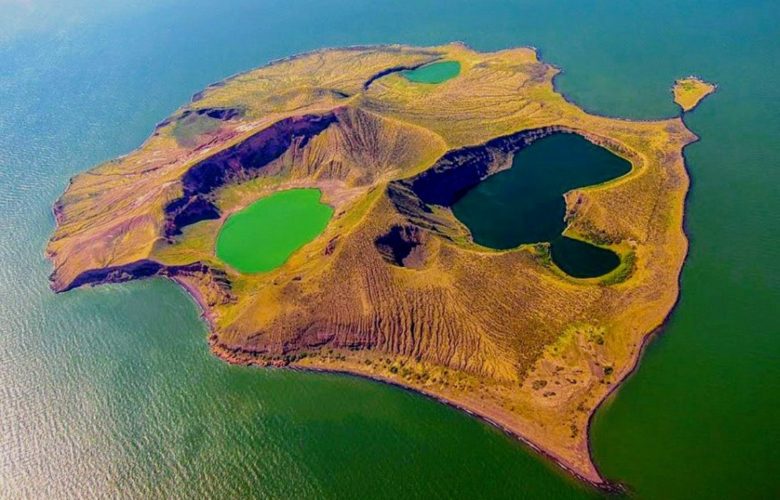Lake Turkana National Parks is a group of three national parks located within the Lake Turkana Basin. They consist of the Sibiloi National Park, the South Island National Park, and the Central Island National Park. The parks were inscribed as a UNESCO World heritage site in 1997. Lake Turkana is a massive inland sea, the largest desert lake in the world. This single body of water is over 250 kilometers long – longer than the entire Kenyan coast. It is widely known as the Jade Sea, because of the remarkable, almost incandescent breathtaking color of its waters. The lake is a national treasure with the world’s single largest crocodile population. The three Turkana national parks serve as a stopover for migrant waterfowl and the lake is a major breeding ground for the Nile crocodile, hippopotamus and a variety of venomous snakes.
Turkana has one of the longest histories on earth, and recent fossil evidence unearthed. The Parks host unique geo-morphological features with fossil deposits on sedimentary formations as well as 100 identified archeological and paleontological sites. There are numerous volcanic overflows with petrified forests. The existing ecological conditions provide habitats for maintaining diverse flora and fauna. The southern island is home to a profussion of birdlife including 34 species of European migrants most spectacularly viewed as they return home between March and April. Birds of prey are also abundant, especially Swallow-tailed kites.
Lake Turkana is Kenya’s most remote destination but one that repays the intrepid traveller with rich rewards

